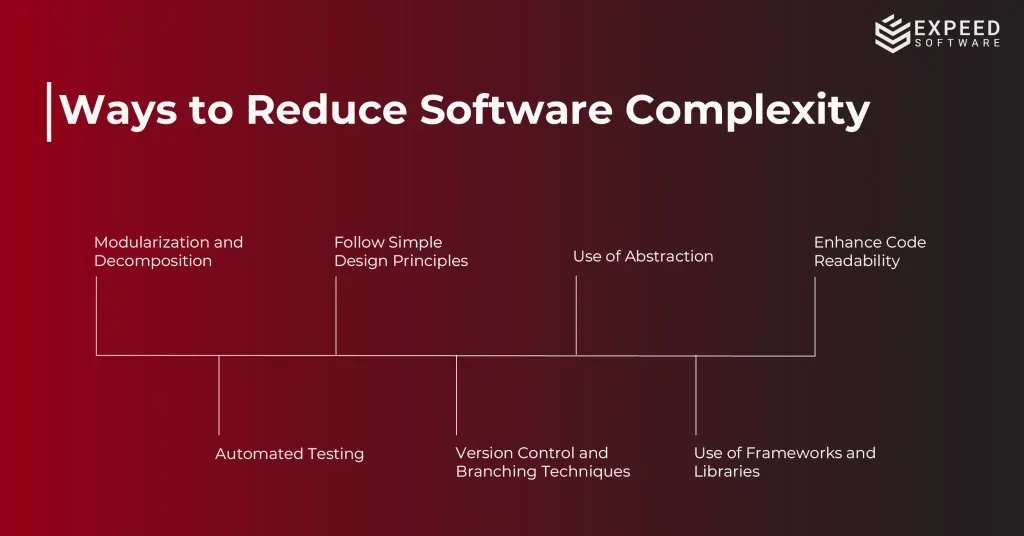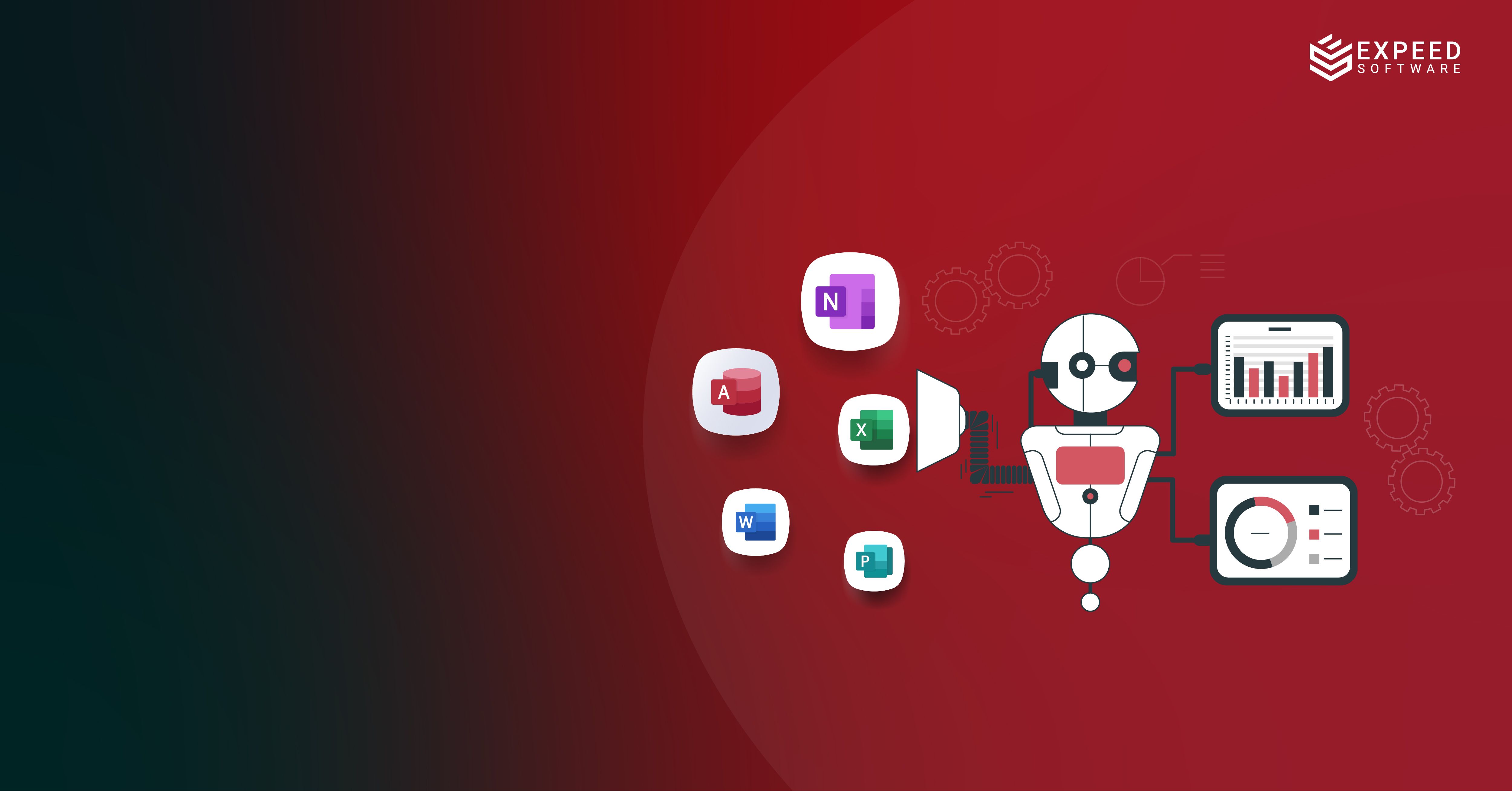Are you tired of fixing frequent bugs in your software? Wondering why your software maintenance feels so challenging? It could be due to the code complexity of your software. Software complexity is the interconnectedness of various components of a software based on code volume, architecture, dependencies, and other features. According to a study by the Software Engineering Institute (SEI) in 2008, software with higher complexity had 25% more defects than those with simpler code. So, how to simplify your software development process and develop easy-to-maintain software? In this blog post, let’s discuss various proven strategies to reduce software development complexity.
For this, you should know the methods for calculating and interpreting software complexity metrics.
How to Calculate Software Complexity

Software complexity metric is a measurement used to evaluate the complexity of a software. These metrics help analyze the code’s maintainability, readability, and overall quality. It provides insights into the structure and risks of a system, helping developers and managers make decisions regarding refactoring, testing, and code reviews.
Some of the key software complexity metrics are:
1. Lines of Code (LOC)
A basic metric that counts the number of lines of code in a software program.
The two variants are:
- Physical LOC: Actual lines of code (including blank lines and comments)
- Logical LOC: Only counts executable code (excluding comments and blank lines)
Interpretation
A large LOC count indicates a large system, but it doesn’t account for code complexity or quality. It can be used along with other metrics to measure code complexity.
2. Cyclomatic Complexity
It evaluates the number of independent paths through a program’s source code. It measures the control flow complexity of a program, indicating how difficult it is to understand, test, and maintain the code.
Interpretation
Lower the cyclomatic complexity, simpler the code and easier to test. Higher cyclomatic complexity means that the code is more complex, and hence, harder to maintain and test.
3. Halstead Complexity Measures
Halsted complexity gives a quantitative measure of system complexity, effort, and cognitive load. The size (quantity) of the function is measured by the length of the function, the number of unique functions and operands, the total number of functions and operands, the vocabulary, and the effort required.
Interpretation
- A higher volume indicates larger, more complex code.
- A higher difficulty and effort indicate that the code will need more resources to understand and maintain.
4. Depth of Inheritance Tree (DIT)
In object-oriented programming, this indicates the number of levels a class is away from the root class.
Interpretation
- A deeper inheritance tree increases complexity, as subclasses inherit more behavior
- The higher the DIT values, the more complicated the software will be to test and refactor
5. Fan-Out / Fan-In
The number of functions that call a particular function is called fan-in.
The number of functions that a particular function calls is called fan-out.
- High fan-in indicates that a function is vital to many other functions, meaning a change in it can have vast consequences.
- High fan-out suggests that a function performs too many things, creating low cohesion and high complexity.
6. Cohesion
It is a measure of how closely related the responsibilities of a single module or class are. High cohesion means that the module or class is focused on a specific task.
Interpretation
- High cohesion helps improve code quality because it indicates that the module or class is focused and easier to maintain.
- Low cohesion means that a module or class performs many different tasks, which increases complexity.
7. Coupling
Measures how dependent one module or class is on another. Low coupling is desirable, as it indicates that modules or classes are more independent of each other.
Interpretation
When coupling is low, code becomes easy to maintain and scale as changes in one module won’t impact the other. Higher the coupling, harder it becomes to maintain and understand the software, as changes in one module affect other modules.
8. Maintainability Index
The maintainability index is a metric that combines many complexity metrics, including cyclomatic complexity, lines of code, and Halstead volume. This indicates how maintainable the code is.
Interpretation
- The higher the score, the more maintainable the software will be.
- A lower score indicates that the software will be more difficult to maintain and refactor.
9. Code Churn
It is the number of lines of code that have been changed over a certain period, including additions, deletions, and modifications. Measuring this value along with other metrics gives an idea about the overall health of the software. The higher the code churn, the more unstable the codebase will likely to be.
Now that we are familiar with the complexity metrics, let’s understand a few powerful ways to minimize software development complexity.
Ways to Reduce Software Complexity
Simplifying software systems not only makes them easier to manage but also improves the quality and productivity of the development team. Here are some effective strategies for reducing software complexity:

1. Modularization
It involves subdividing a large complex system into small independent modules. Hence, it’ll be more manageable and less complex.
Here are a few powerful modularization techniques:
Microservices Architecture
Instead of building a large monolithic application, split the system into small, independent services that handle specific tasks. This makes it more maintainable and scalable. Are you interested in discovering how microservices can streamline your development process? Check it out here.
Separation of Concerns
SoC is a design principle used to manage complexity by partitioning software into separate components (class, function, module, service) where each component is responsible for a particular functionality.
Advantages:
Testing, debugging, and refactoring will be easier. Microservices architecture supports independent deployment and scaling. Coupling between components reduces, and hence improves maintainability.
2. Follow Simple Design Principles
Simplifying design complexity can significantly reduce overall software complexity. Focus on what’s important and avoid adding features that may not matter in the future. Avoid over-engineering or adding unnecessary features that don’t add value. Similarly, avoid using unnecessary code as this increases maintenance costs and increases the possibility of errors. If you follow these principles, you will end up with a better, cleaner, more efficient codebase.
Advantages:
Code becomes easy to maintain, extend, and test. The risk of defects and bugs will be significantly reduced.
3. Use of Abstraction
As abstraction hides the complexity behind interfaces and APIs, developers can interact with high-level functionalities even without knowing every low-level implementation detail. Here are a few abstraction techniques:
Encapsulation
Encapsulate implementation details into classes and objects and expose only necessary interfaces to the outside world.
APIs
Use APIs to hide complex logic and implementation details.
Advantages:
Developers can easily interact with complex systems without deep domain knowledge. Also, the system becomes more flexible and extensible.
4. Enhance Code Readability
Easy-to-read codes are easier to maintain and modify. Poor code structure, unclear naming, and lack of documentation are major reasons for software complexity.
Here are a few things to keep in mind:
Use meaningful variables, functions, and class names that convey their purpose. Follow consistent coding conventions to make code easy to read. Use automated formatting tools to ensure accuracy. Provide clear notes wherever necessary. High-quality documentation describing the architecture and special features can also help developers understand the system faster. Refactor the codebase regularly to improve clarity and structure. A well-organized and clean codebase is easy to extend and maintain.
Advantages:
Lesser cognitive load on developers when working with the code
Easier onboarding of new team members
Improved collaboration among team members
5. Automated Testing
It reduces the complexity of debugging and makes refactoring and extending the codebase easier. Here are a few testing approaches.
Unit Tests
Write unit tests for individual functions or methods to ensure they behave as expected. Unit tests help catch bugs early and simplify code refactoring by ensuring that existing functionality is not broken.
Integration Tests
Perform integration tests to verify that different parts of the system work together. This helps prevent issues when components are integrated.
Test Coverage
Make sure that critical parts of the application are well-covered by automated tests. Tools like pytest-cov (for Python), or Istanbul (for JavaScript) can help you measure test coverage.
Continuous Integration (CI)
Set up a CI pipeline to automatically run tests every time a change is pushed to the repository. This ensures that errors are caught early and reduces the complexity of troubleshooting.
Advantages:
Reduces bugs and regressions.
Helps identify problems early in the development cycle.
6. Branching and Version Control
Effective version control and branching strategies help manage the complexity of team collaboration, feature development, and deployment. A few strategies are:
Feature Branching
Use feature branches to isolate new features or bug fixes. This avoids introducing incomplete or experimental code into the main codebase.
Gitflow
Use structured branching strategies like Gitflow for release and feature branches, or Trunk-Based Development for continuous integration into a main branch to organize the development workflow.
Tagging and Releases
Tag releases and use version numbers to keep track of stable versions, making it easier to manage releases and rollbacks.
Advantages:
It reduces the risk of conflicts in collaborative development. Also, it keeps the codebase stable while allowing multiple developers to work on features independently.
7. Use Frameworks and Libraries
Leverage well-established frameworks and libraries to significantly reduce the complexity of software development by using pre-built solutions to common problems. A few solutions are:
Frameworks
Use established frameworks (e.g., Django for Python, Spring for Java, React for JavaScript) to avoid reinventing the wheel. These frameworks provide standard ways to organize code, handle user authentication, manage data access, and more.
Third-Party Libraries
Instead of building everything from scratch, use third-party libraries for common tasks like input validation, data processing, or charting.
Componentization
For web development, use pre-built UI component libraries (e.g., Material UI, Bootstrap etc.) to reduce the complexity of designing and styling the user interface.
Advantages:
It saves development time and effort. Also, it reduces the amount of custom code that needs to be maintained. This way you can make use of community-tested, reliable solutions.
8. Documentation and Knowledge Sharing
Don’t forget to maintain and update documentation that covers the key components, system architecture, user guides, and all vital information. Use knowledge-sharing tools like Confluence, GitHub, Wikis etc., and make sure everyone on the team is aligned on main decisions. Ensure consistency and quality across the codebase. Conduct regular code reviews and promote knowledge sharing among team members.
Advantages:
Good documentation helps reduce dependency on individual team members’ knowledge. It also helps with onboarding new developers and encourages collaboration and best practices.
Make it Simple
Minimizing software complexity requires continuous effort that involves architecture, design, processes, and team best practices. By focusing on modularization, simplicity in design, automation, clear communication, and the use of established tools, software teams can manage complexity more effectively, ultimately delivering high-quality software with less risk and lower maintenance costs.
If you’re looking for expert solutions and strategies to simplify your software development, we’re here to help. Contact us.

Expeed Software is a global software company specializing in application development, data analytics, digital transformation services, and user experience solutions. As an organization, we have worked with some of the largest companies in the world, helping them build custom software products, automate processes, drive digital transformation, and become more data-driven enterprises. Our focus is on delivering products and solutions that enhance efficiency, reduce costs, and offer scalability.


